Cross posted from The Stars Hollow Gazette
Vaccinations are perhaps the greatest discovery in modern medicine. Over the one hundred plus years they have prevented the spread of deadly deadly diseases caused by bacteria and virus, and, as in the case of smallpox completely eradicating the disease. Polio, too, is on the verge of being eliminated, except for pockets of resistance in some areas that are plagued by the ignorance of fanatic religiosity and politics.
Measles is a dangerous disease that is completely preventable with a vaccination. It is not a disease to be “screwed around with” as Phil Plait of Slate’s Bad Astronomy blog asserts:
Out of 1,000 people who contract it, one or two will die, and many more will require hospitalization. In general, those at risk are seniors and infants too young to be vaccinated. Approximately 100,000 children a year worldwide die of measles. That’s more than the entire population of my hometown of Boulder, Colo. Imagine an entire city of children dying from a preventable disease, and perhaps you can understand why I’m so vocal about this.
The vaccine for measles is safe. Phil debunks the misinformation and myths about the Measles/Mumps/Rubella vaccine (MMR) and other vaccines at his other blog AntiAntiVax: The Truth About The Evils Of Vaccination
- Some in the anti-vax movement claim that the MMR has/had mercury in it. However, the MMR vaccine does not and never has had any mercury in it.
- The basis of the “MMR vaccine causes autism” argument is a flawed study (retracted by The Lancet on February 2, 2010) by Andrew Wakefield, who had several ethics breaches, including failure to disclose financial compensation from a lawyer representing families claiming MMR cause their children’s autism, failure to disclose financial interests in patents for MMR alternatives, failure to include data which contradicted his conclusions, use of contaminated samples to support his conclusions.
- A 2009 study, titled “Lack of association between measles-mumps-rubella vaccination and autism in children: a case control study” examined whether there was a relationship between MMR and autism and concluded that there was no association.
- Independent studies trying to replicate Wakefield’s results have come up negative. To date, no properly controlled study has shown a causal link between vaccines and autism.
- Many opponents of the MMR will claim that the diseases prevented are mild and not dangerous. This is not the case, as can be seen in numerous outbreaks around the world. Measles can lead to encephalitis (swelling of the brain) in about 1 of every 1,000 individuals, possibly leading to death. Mumps can lead to sterility in adult men, swollen ovaries or breasts in adult women and miscarriage in pregnant women, as well as encephalitis. Rubella (German measles) can cause encephalitis, as well as birth defects if contracted by a pregnant woman. There is also some evidence to suggest that infection with rubella while pregnant is the cause of some cases of autism.
Yet there is still resistance to vaccinations, even here in the US, where there is an anti-vaccination movement led mostly by religious fundamentalists and faith healers.
Measles Outbreak Hits Texas Church That Preached Against Vaccines
A Texas megachurch known for preaching against the use of vaccines has been hit by an outbreak of measles, a highly contagious virus for which there is no known cure. Measles can be prevented by vaccination.
So far, at least 16 people have contracted measles, all of whom are connected to Eagle Mountain International Church in Newark, Texas. Per USA Today, the church’s senior pastor, Terri Pearsons, has been critical of measles vaccinations in the past.
In a segment on his MSNBC show All In, host Chris Hayes discusses the outbreak, the larger culture of information, and misinformation around vaccinations, as well as, the anti-vaccination crowd’s impact on vaccination culture, with Arthur Caplan, Professor of Bioethics and Director of the Division of Medical Ethics at New York University and Seth Mnookin, author of the book “The Panic Virus: A True Story of Medicine, Science, and Fear.”
See your doctor or health clinic. Vaccinations are free under the 2010 Affordable Care act. Get you and your family vaccinated.

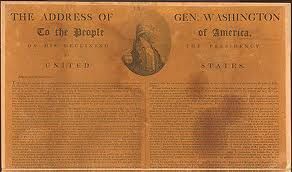 Originally published in David Claypoole’s American Daily Advertiser on September 19, 1796 under the title “The Address of General Washington To The People of The United States on his declining of the Presidency of the
Originally published in David Claypoole’s American Daily Advertiser on September 19, 1796 under the title “The Address of General Washington To The People of The United States on his declining of the Presidency of the The building would take nearly a century to complete, as architects came and went, the British set fire to it and it was called into use during the Civil War. Today, the Capitol building, with its famous cast-iron dome and important collection of American art, is part of the Capitol Complex, which includes six Congressional office buildings and three Library of Congress buildings, all developed in the 19th and 20th centuries.
The building would take nearly a century to complete, as architects came and went, the British set fire to it and it was called into use during the Civil War. Today, the Capitol building, with its famous cast-iron dome and important collection of American art, is part of the Capitol Complex, which includes six Congressional office buildings and three Library of Congress buildings, all developed in the 19th and 20th centuries. On September 25, 1789, the first Congress of the United States adopted 12 amendments to the U.S. Constitution–the Bill of Rights–and sent them to the states for ratification. Ten of these amendments were ratified in 1791. In November 1789, North Carolina became the 12th state to ratify the U.S. Constitution. Rhode Island, which opposed federal control of currency and was critical of compromise on the issue of slavery, resisted ratifying the Constitution until the U.S. government threatened to sever commercial relations with the state. On May 29, 1790, Rhode Island voted by two votes to ratify the document, and the last of the original 13 colonies joined the United States. Today, the U.S. Constitution is the oldest written constitution in operation in the world.
On September 25, 1789, the first Congress of the United States adopted 12 amendments to the U.S. Constitution–the Bill of Rights–and sent them to the states for ratification. Ten of these amendments were ratified in 1791. In November 1789, North Carolina became the 12th state to ratify the U.S. Constitution. Rhode Island, which opposed federal control of currency and was critical of compromise on the issue of slavery, resisted ratifying the Constitution until the U.S. government threatened to sever commercial relations with the state. On May 29, 1790, Rhode Island voted by two votes to ratify the document, and the last of the original 13 colonies joined the United States. Today, the U.S. Constitution is the oldest written constitution in operation in the world.
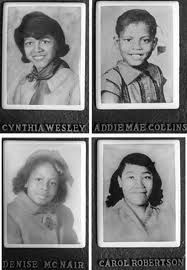
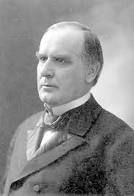
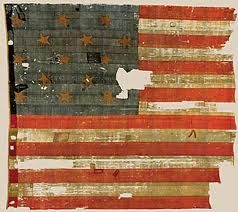

 The Pentagon is the headquarters of the
The Pentagon is the headquarters of the 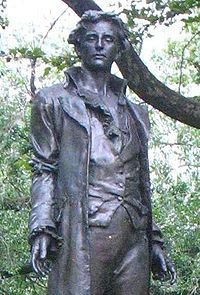 On this day in 1776, General George Washington asks for a volunteer for an extremely dangerous mission: to gather intelligence behind enemy lines before the coming Battle of Harlem Heights. Captain Nathan Hale of the 19th Regiment of the Continental Army stepped forward and subsequently become one of the first known American spies of the Revolutionary War.
On this day in 1776, General George Washington asks for a volunteer for an extremely dangerous mission: to gather intelligence behind enemy lines before the coming Battle of Harlem Heights. Captain Nathan Hale of the 19th Regiment of the Continental Army stepped forward and subsequently become one of the first known American spies of the Revolutionary War.